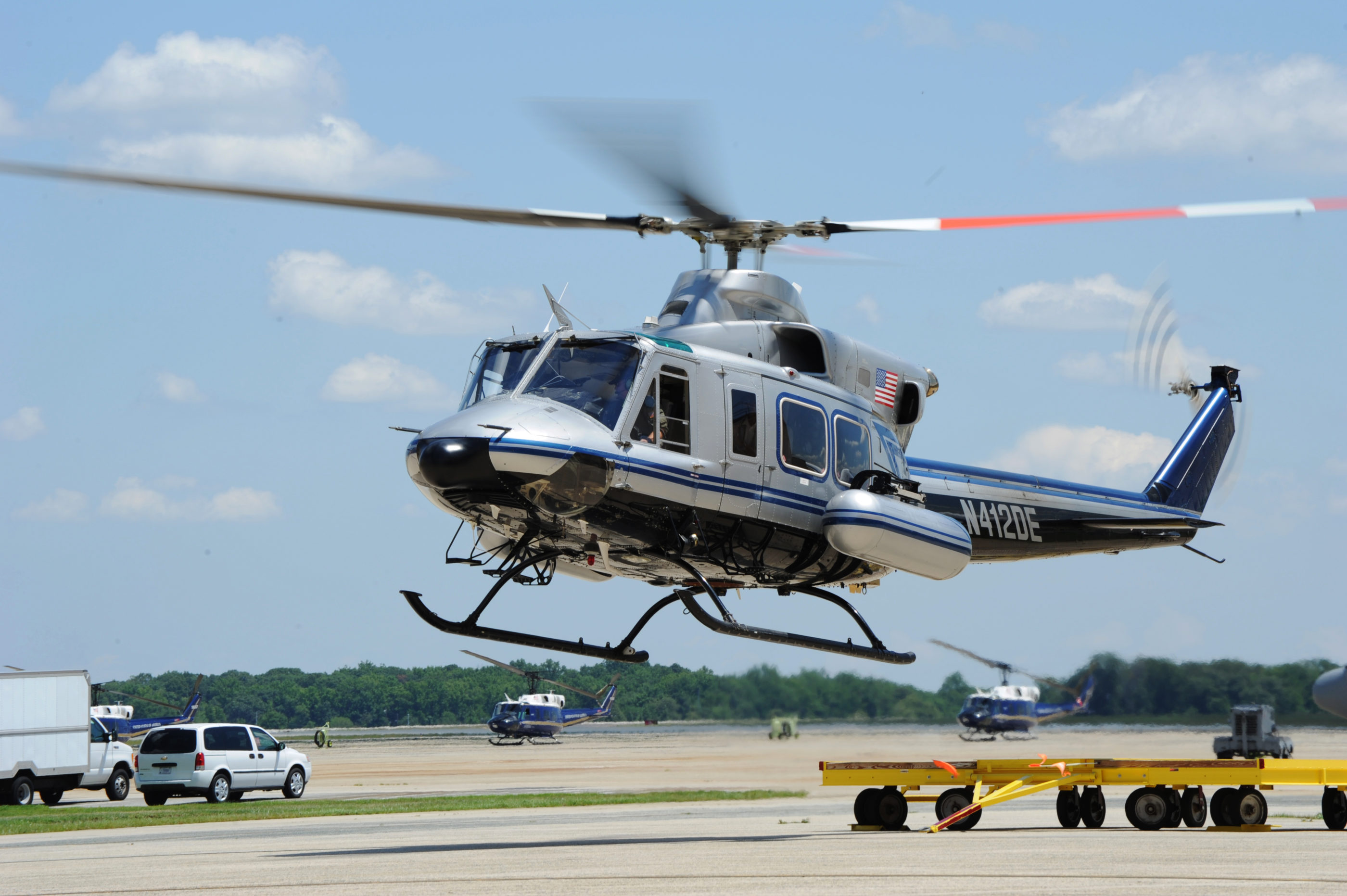Residents of Washington, D.C., accustomed to helicopters of many types and affiliations crisscrossing the U.S. capital, began noticing new low-flying aircraft this week.
The blue-and-silver Bell 412s belong to the U.S. Department of Energy’s National Nuclear Security Administration (NNSA) and are flying grid patterns over the city, sipping the air for any signs of unnaturally high radiation.
“Aerial radiation surveys are conducted to establish a baseline measurement of natural background radiation,” the NNSA said in an email to Vertical. “These baseline measurements help DOE/NNSA identify radiation anomalies that are elevated above natural background levels. If an anomaly is encountered that is inconsistent with background radiation or legitimate use of medical or industrial radionuclides, DOE/NNSA and its mission partners across the federal government would respond to address it in the interest of protecting public health and safety.”
The ongoing mission is for conducting scientific measurements only and no surveillance or other form of monitoring will occur during these flights, the NNSA said.
D.C. residents are fairly used to helicopters overhead, with helicopters from more than a half-dozen government agencies — including the FBI, National Park Service, U.S. Air Force, Army, Marine Corps and Coast Guard — and law enforcement and air medical organizations regularly making an appearance. Maryland State Police and the D.C. Metro police also operate helicopter fleets.
The VH-3D Sea King that serves as Marine One when the president is on board regularly flies between Andrews and the White House, some of the same airspace sometimes used by V-22 Ospreys flying north along the Potomac River from Marine Corps Base Quantico in Virginia.
The NNSA preempted public concern by announcing the radiation measuring mission because its helicopters are flying directly over residential areas of the city and lower than most other rotorcraft.
Flying as low as 150 feet in some spots, two twin-engine NNSA helicopters are sporting passive radiation-sensing pods on either side of the cabin, sensing the air in advance of the presidential inauguration scheduled for Jan. 20, 2021. The helicopters fly at about 80 miles per hour (130 kilometers per hour) in daytime during these aerial radiation mapping missions, which are conducted prior to many large public events, the NNSA spokesperson told Vertical.
“The primary mission of the AMS aircraft is to characterize the extent and magnitude of a radiological release, whether accidental or deliberate, to inform protection action decision-making,” the NNSA said. “There is no fixed requirement governing how often aerial measuring must occur; however, the fidelity of the baseline data degrades over time, and DOE/NNSA endeavors to support law enforcement requests for surveys of the District to ensure that the baseline data support mission requirements.”
NNSA’s Aerial Measuring System (AMS) is an element of the Nuclear Emergency Support Team (NEST) based at Joint Base Andrews in Maryland, the same base at which Air Force One is stationed. The helicopters and three fixed-wing aircraft also operate out of Nellis Air Force Base in Nevada. The NNSA owns two Bell 412 AMS aircraft that are operated for the government by Mission Support Test Services.
Both Bell 412s are aging out of the role — they were purchased used in 1996 and 1997 — and are set to be replaced, though there are no new mission requirements aside from upgrading to newer airframes, the NNSA said. Replacing the helicopters is the second of a two-phase fleet recapitalization phase. Phase one involved replacement of the agency’s three fixed-wing aircraft.
“The two existing rotary-wing aircraft have been in DOE service for 23 and 24 years, respectively,” the NNSA said. “These helicopters will be recapitalized as they are aging and are experiencing increasing downtime for unscheduled maintenance, potentially impacting readiness.”





